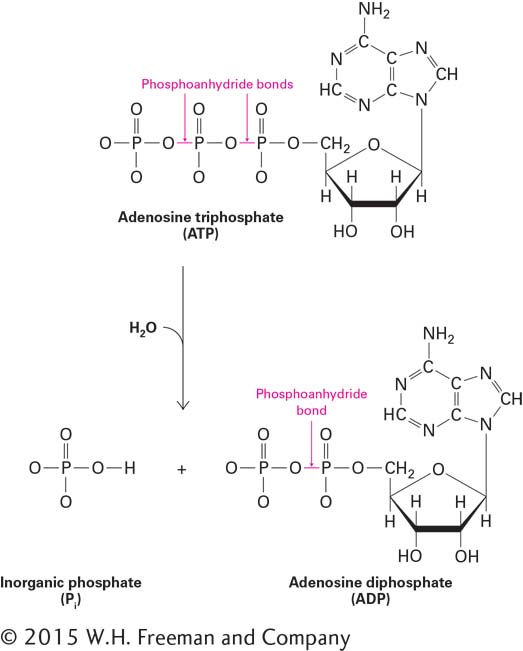
FIGURE 2- 31 Hydrolysis of adenosine triphosphate (ATP). The two phosphoanhydride bonds (red) in ATP (top), which link the three phosphate groups, each have a ΔG°′ of about –7.3 kcal/mol for hydrolysis. Hydrolysis of the terminal phosphoanhydride bond by the addition of water results in the release of phosphate and generation of ADP. Hydrolysis of the phosphoanhydride bonds of ATP, especially the terminal one, is the source of energy that drives many energy- requiring reactions in biological systems.
[Leave] [Close]